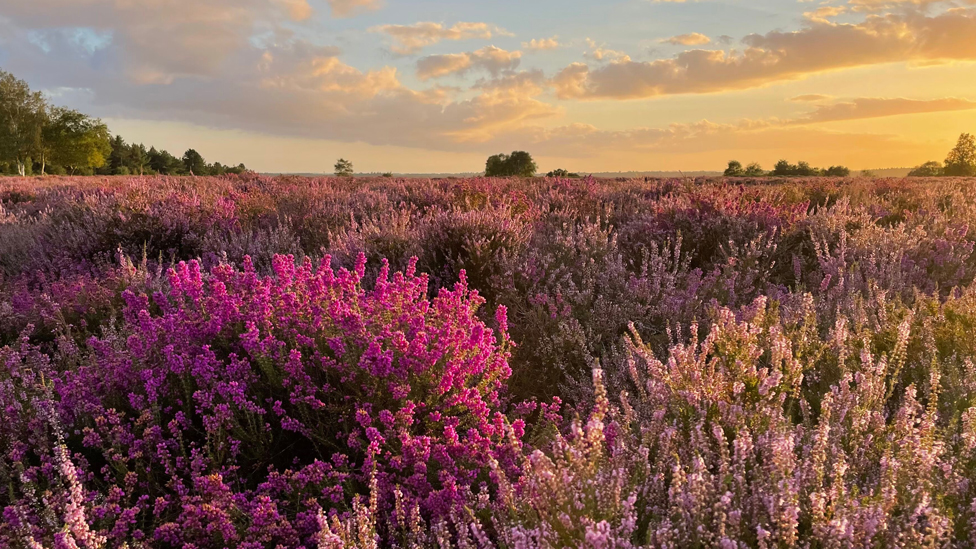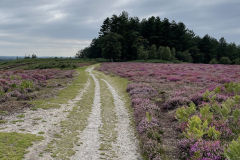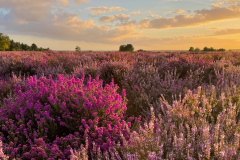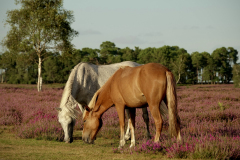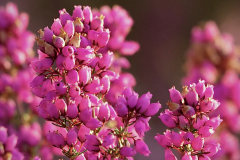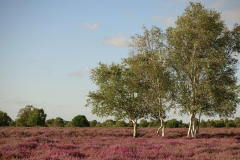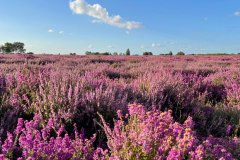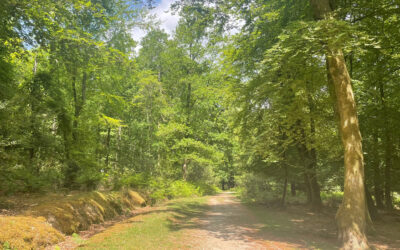Heathlands gradually turning vivid shades of purple and pink is one of the seasonal delights of the New Forest.
The late summer display of heather is a colourful backdrop to walks across the forest.
On paths flanked with waves of heather, you can savour the floral aroma drifting on the summer breeze and the constant hum of bees as they harvest the pollen.
The New Forest is home to three varieties of heather – ling heather, bell heather and cross-leaved heather.
All have different shades and slightly different blooming times which overlap with each other around mid-August through to mid-September. All three grow together on the sandy, acidic, nutrient-poor soils on the open heaths.
Ling and bell heather are found on drier ground, while cross-leaved heather prefers damper areas. None can tolerate particularly wet areas.
Heather was widely used in the forest’s traditional crafts – ling was used for thatching, making baskets and brooms as well as for bedding, fuel and wattle. The flowers can also be used to make a tea or to flavour heather ale.
Mature dry heath where heather thrives is an important habitat for bird species including the Dartford warbler and for reptiles like the sand lizard and smooth snake.
The swathes of heather are also important for pollinating insects, providing a vital source of nectar for for honeybees, buff-tailed and red-tailed bumblebees and ruby tiger moths.
In Pictures: New Forest Heather
The paths across New Forest heathlands make for spectacular walks when the heather is in bloom.
Ibsley Common, part of the National Trust-managed Northern Commons, is well worth the climb from Rockford car park with wide open views of heather on all sides.
Just outside Lyndhurst is White Moor – discover more about its history on our Lyndhurst Explorer or combine it on a walk to and from Ashurst on our Lyndhurst-Ashurst loop. Or enjoy the view on a walk over the ridgeway from Bolton’s Bench and into some of the nearby woodlands.
The rolling heathlands surrounding Burley are also a magnificent site with the heath in bloom. A walk from Burley car park sweeps down from Turf Hill and along the Castleman’s Corkscrew rail line.
A walk from the High Corner Inn at Linwood takes you up Hallicksole Hill – another area of open heath in the west of the forest.
